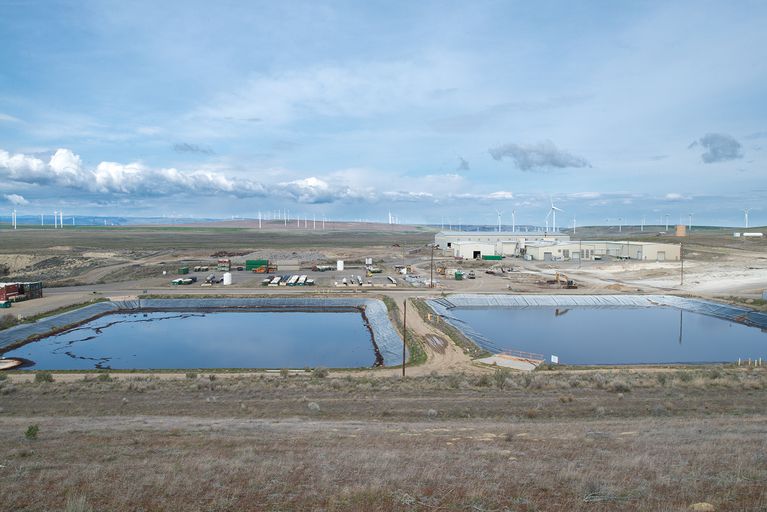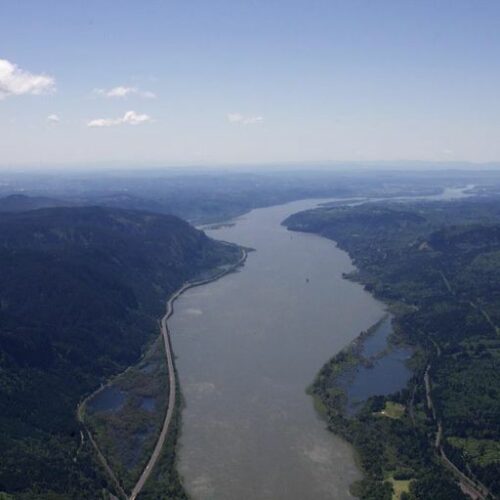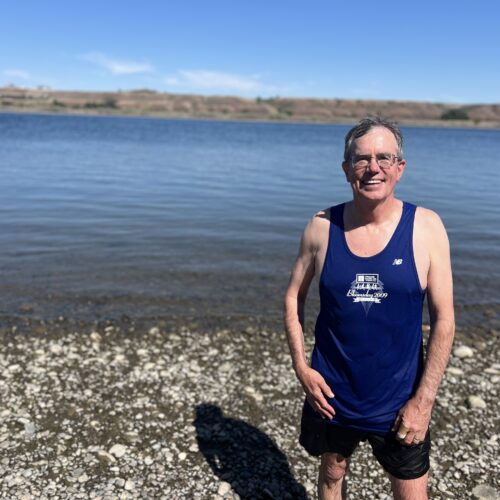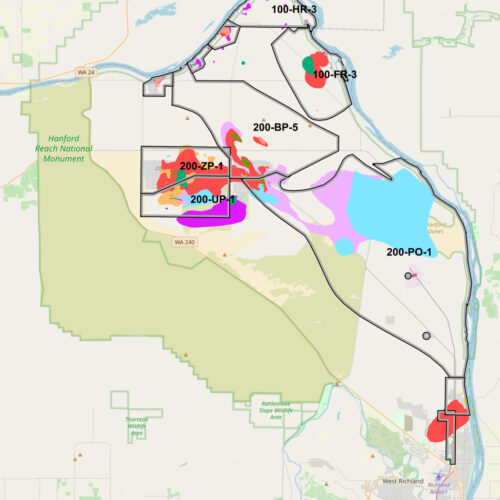
Hazardous Waste Landfill Near Columbia River Seeks To Expand
READ ON
BY BRADLEY W. PARKS / OPB
The company operating Oregon’s only hazardous waste landfill says it needs room to grow as it anticipates an influx of waste in the years to come.
Military cleanups, federal Superfund sites, firefighter training facilities — all are among reasons cited by Chemical Waste Management, or CWM, to expand its hazardous waste operation outside the Columbia River town of Arlington.
“This is all about planning for the future and protecting the environment,” said CWM spokesperson Jackie Lang, “making sure that dangerous materials and potentially dangerous materials are managed safely in the years ahead.”
The current hazardous waste landfill sits on a nearly 1,300-acre plot adjacent to Oregon’s largest solid waste landfill run by the same parent company, Waste Management. The U.S. Environmental Protection Agency defines hazardous waste as any solid waste that could harm human health or the environment.
CWM is currently permitted to use 320 acres for hazardous waste disposal. The company wants to add 200 acres of disposal space and will apply to modify its permit with the Oregon Department of Environmental Quality.
DEQ cleanup, hazardous waste permitting and emergency response manager David Anderson said the existing hazardous waste landfill “is approximately half full.” With new waste streams on the horizon — including the Portland Harbor Superfund cleanup — more space will soon become critical, Anderson said.
“That adds a significant volume [of waste] that would need to be managed somewhere in the Northwest.”
The Portland Harbor site is a 10-mile stretch of the Willamette River contaminated from years of heavy industry. The river is a critical migratory corridor for salmon and steelhead, a recreation destination, and supports global commerce. The EPA added the Portland Harbor to its list of priority cleanups in 2000.
Lang said the cleanup will require disposal of about 285,000 tons of hazardous material and more than a million tons of non-hazardous dredge.
“We don’t have that contract in place at this time, but that’s the type of material that will make up a large part of the incoming waste,” Lang said.
CWM’s Arlington landfill has played a critical role in the region since opening in the 1970s. The United States has just 18 commercial hazardous waste landfill facilities as of 2019 — one apiece in Oregon and Idaho, and none in Washington and Alaska.
“We as a society produce a lot of really nasty things,” said DEQ eastern region spokesperson Laura Gleim. “This facility is an example of a safe, secure place for that really nasty stuff to go and be secure so that it won’t threaten public health, our communities or the environment.”
However, CWM has faced criticism in recent years after illegally accepting about 2.5 million pounds of radioactive fracking waste.
The Oregon Department of Energy decided last week to keep that waste in the ground, which CWM preferred over digging up the waste and shipping it elsewhere.
“We moved quickly to address the situation,” Lang said. “We’ve been open and transparent since day one. And today our protocols are better and stronger than ever.”
DEQ fined CWM $60,000 and the company that sent them the waste $308,656 for their actions. The landfill will install new technology to scan for radiation before putting waste in the ground and will be subject to more stringent water quality monitoring.
“We recognize the concern, and, obviously, we’re concerned as well,” said DEQ’s Anderson. “They made a number of both process changes and physical changes to the facility, so that we can be assured that this won’t happen again.”
CWM has yet to submit its application to modify the company’s permit. When it does, members of the public will have a chance to comment on the application.
DEQ will then draft a permit, after which will come an additional public comment period before a final permit decision is made.
Copyright 2021 Oregon Public Broadcasting. To see more, visit opb.org
Related Stories:

Preliminary agreement reached for a modernized Columbia River Treaty
The Columbia River west of the Gorge as it heads toward Portland and out to the Pacific Ocean. (Credit: Amelia Templeton / OPB) Listen (Runtime 1:01) Read After more than

‘The water’s nice today’: One man’s quest to jump in the Columbia River for 25 years
For the past 25 years, Greg Patton has spent at least a few moments each month jumping in the Columbia River. (Credit: Courtney Flatt / Northwest News Network) Listen (Runtime

New tool tracks contaminated groundwater at Hanford, other DOE sites
A snapshot of the Hanford cleanup site showing the various groundwater plumes across the site. (Credit: U.S. Department of Energy / Office of Environmental Management) Listen (Runtime 1:00) Read A















